Here are some more photos from my exhibit, Mended Ways, which ended last Sunday at the New York Ceramics & Glass Fair. In addition to the 100+ examples of my own antique ceramics and glassware, I also curated a collection of contemporary work by ceramic artists, with help from Leslie Ferrin of Ferrin Contemporary. I’d like to thank these artists for loaning their work and for continuing the tradition of early repairs.
Details from fastidiously hand painted plates by Stephen Bowers, showing trompe l’oeil fragments and staples.
Ai Weiwei’s “Bubble” sphere using the Chinese kintsugi repair technique to enhance the cracks by filling them with gold.

Detail of a figure by Sergei Isupov with painted cracks.
Two pieces by Paul Scott, using reassembled antique ceramics.
Shattered and fused plate by Ruan Hoffmann.
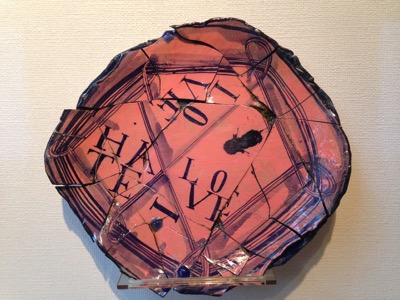
Stoneware jug with wood “staples” by Adam Lefebre.
Nicolle Horsfield’s broken plate stitched back together using silk thread.
One of many explosive sculptures using reassembled broken antique ceramics by Bouke de Vries.
Vase with gold kintsugi repair by Frances Palmer
Mara Superior also used the kintsugi technique to repair a crack in a figural vase.
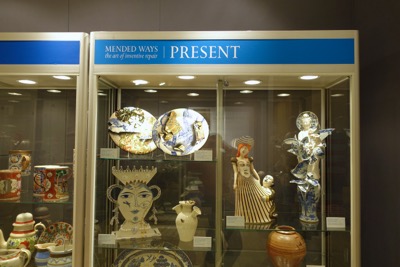


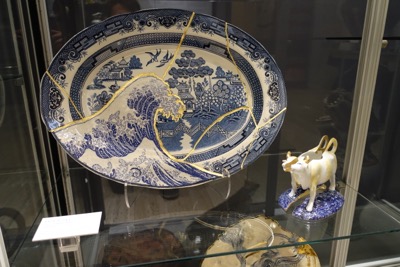


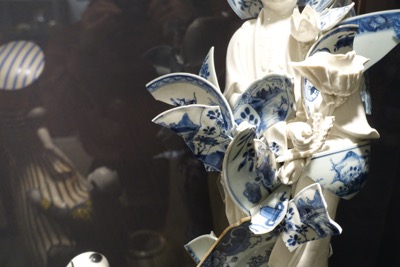

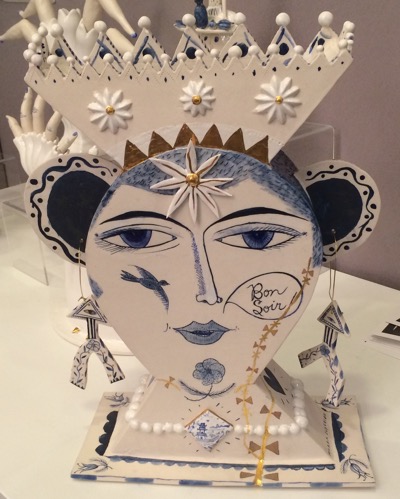
Congratulations Andy! The exhibit looks wonderful and I hear the lecture was a big success and well received!
I especially love the case with the jumble of repaired plates.
It’s good you had some days for the lecture and show before the storm.
Sure wish I could have been there!
Thanks for sharing!
Love and hugs!!! Carol
Good for Ai Weiwei for discovering kintsugi–which is Japanese. The story preserved in Japan says that kintsugi was invented by Japanese lacquer specialists in response to the horror of seeing a beautiful Chinese Longquan celadon bowl mended in China with clunky staples.
Louise – thank you for noting the beauty of Kintsugi but in this case the work was not by the artist or under his direction. However, it does not negate the beauty of the technique or pose the question of added value to a mended and now, unique, object.
“The Ai Weiwei Blue Bubble is one of 100 that were shown as an installation in Miami in 2008 on Watson Island during Art Basel. Purchased by a private collector, this one bubble cracked and was restored using traditional Japanese kintsugi technique.
We are showing the repaired Blue Bubble at the fair as part of the curated exhibition organized by Andrew Baseman, that includes contemporary alongside historical ceramics that intentionally utilize restoration or repair techniques. The Weiwei is one object that provokes the question of value when restoration is made obvious.
When the damage occurred to the Weiwei, the studio was contacted and made aware of the proposed repair. They raised no objection but did not participate in the actual restoration process which was done by a professional conservator.”